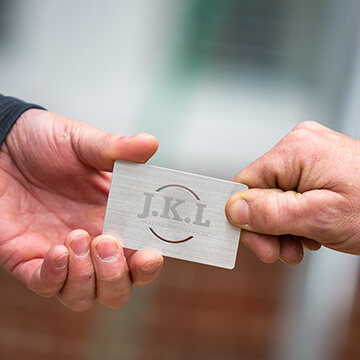Scaffolding is crucial in both domestic and commercial construction projects. It provides a stable and secure platform for workers, ensuring efficiency and safety at heights. Moreover, understanding why scaffolding is essential can significantly impact project outcomes.
However, scaffolding can pose significant risks if not used correctly. This guide outlines essential safety measures to help prevent accidents and ensure safe operations when working with scaffolding.
Reach out to our scaffold solutions experts at J.K.L Scaffolding Services. We are a responsible and reliable team based in Maidstone and working across the South East. Call 0800 061 4800 or email info@jklscaffolding.co.uk today to discuss your requirements.
Safety Tips For Domestic And Commercial Scaffolding: Your Ultimate Checklist
1. Inspect The Scaffold Before Use
Before using any scaffold, conduct a thorough inspection to identify any damage or defects. Check for bent or broken components, loose or missing parts, and signs of wear and tear.
Ensure that all locking mechanisms are secure and that the scaffold is stable. If you find any issues, address them immediately before proceeding. Regular scaffolding inspections, both before daily use and periodically during long-term projects, help maintain safety and prevent accidents.
Documenting these inspections can also help track the scaffold’s condition and highlight recurring issues that may require more permanent solutions.
2. Ensure Proper Training
Proper training is crucial for anyone working with or around scaffolding. All workers should receive comprehensive training on scaffold assembly, use, and disassembly.
This training should cover recognising hazards, safe loading practices, and emergency procedures. Workers should also be trained in the correct use of personal protective equipment (PPE), including helmets, harnesses, and non-slip footwear.
Continuous education and refresher courses can help keep workers up to date with the latest safety standards and practices, especially in industrial scaffolding settings where safety measures are critical.
3. Use Guardrails And Toeboards
Guardrails and toeboards are essential components that prevent falls and injuries. Ensure guardrails are installed on all open sides and ends of the scaffold and that they are at the correct height and securely fastened.
Toeboards should be in place to prevent tools and materials from falling off the scaffold and posing hazards to workers below. Regularly inspect these safety features to ensure they remain intact and effective.
Proper use of guardrails and toeboards significantly reduces the risk of falls, which are among the most common scaffold-related accidents.
4. Maintain A Clean Work Area
Keeping the scaffold platform clean and free of clutter is vital for preventing trips and falls. Ensure that tools, materials, and debris are regularly removed and stored properly. Encourage workers to clean as they go and provide adequate storage solutions for materials and tools.
A tidy work area not only reduces the risk of accidents but also improves overall efficiency and productivity.
5. Follow Load Limits
Every scaffold has a specified load capacity that should not be exceeded. Overloading a scaffold can lead to structural failure and accidents. Make sure to distribute materials and tools evenly across the platform and avoid placing heavy equipment in concentrated areas.
Be aware of the combined weight of workers, tools, and materials, and stay within the scaffold’s load limit. Regularly review the scaffold’s load specifications and ensure all workers are informed about these limits.
Adhering to load limits is crucial for maintaining the structural integrity of the scaffold and ensuring worker safety.
6. Stabilise The Scaffold
Stability is essential when working with scaffolding. Ensure the scaffold is placed on a solid, level foundation, using base plates, mudsills, or other suitable supports. In areas with uneven ground, additional measures such as adjusting the scaffold legs or using levelling jacks may be necessary.
In windy conditions or where additional stability is required, secure the scaffold to the building or structure using ties or braces. Regularly check these stabilising components to ensure they are secure and effective.
7. Secure Access Points
Safe access to and from the scaffold is essential to prevent falls and injuries. Use ladders, stairs, or ramps that are designed specifically for scaffold access. Ensure these access points are securely attached to the scaffold and are free from obstructions.
Ladder rungs should be in good condition, and any stairs or ramps should have non-slip surfaces. Properly secure and inspect access points regularly to maintain their safety.
Providing secure and unobstructed access helps workers move safely between different levels of the scaffold, reducing the risk of falls.
8. Monitor Weather Conditions
Weather can significantly impact the safety of scaffolding. Avoid using scaffolding in adverse conditions such as high winds, heavy rain, snow, or ice, as these can affect stability and worker safety.
High winds can cause materials and equipment to become airborne, while rain, snow, and ice can create slippery surfaces. If you must work in such conditions, take extra precautions such as securing loose items, using additional bracing, and ensuring all surfaces are as non-slip as possible.
Regularly check weather forecasts and plan work schedules accordingly to avoid unnecessary risks.
9. Use Fall Protection Systems
Fall protection systems, such as harnesses and lanyards, are critical for ensuring worker safety at height. Ensure that all workers are equipped with appropriate fall protection gear and that they are trained in its correct use.
Anchor points for harnesses should be secure and capable of supporting the load in the event of a fall. Regularly inspect fall protection equipment for signs of wear and damage and replace any faulty components immediately.
10. Regular Maintenance And Repair
Regular maintenance of scaffolding is essential to ensure its longevity and safety. Schedule routine inspections to identify and address any wear, damage, or other issues promptly.
Replace any damaged or worn components immediately to prevent accidents. Keep detailed records of maintenance activities, including inspections, repairs, and replacements.
Proactive maintenance helps prevent unexpected failures and keeps the scaffold in optimal condition. Understanding the types of scaffolding and their specific maintenance needs can further enhance safety and efficiency.
Contact JKL Scaffolding
Work With A Responsible Scaffolding Company
A responsible scaffolding company will take care of safety and health requirements without you having to worry about a thing. They are proficient in offering sturdy scaffolds tailored to your project and managing them well.
At J.K.L Scaffolding Services, our expert team sets the benchmark for professional scaffolding solutions in Kent. Our team of dedicated scaffolding erectors is committed to providing tailored services across the South East, including West Malling, Bromley, and Maidstone.
With extensive experience, we deliver high-quality results while prioritising safety at every stage of your project. As a trusted scaffolding company, we take safety very seriously. Our approach ensures that all necessary health and safety measures are implemented and adhered to throughout the project.
We manage our workload effectively, maintain open communication with regular updates, and strive to exceed industry standards. Partner with us for reliable, safe, and professional scaffolding solutions. Call 0800 061 4800 today.
Conclusion
Safety in scaffolding is non-negotiable. By following these 10 essential tips, you can ensure a secure and efficient working environment on both domestic and commercial sites.
Our reputable scaffolding company, J.K.L Scaffolding Services, is here for you. We ensure safety and professionalism in every project – big or small. Contact us today to discuss your scaffolding requirements.



